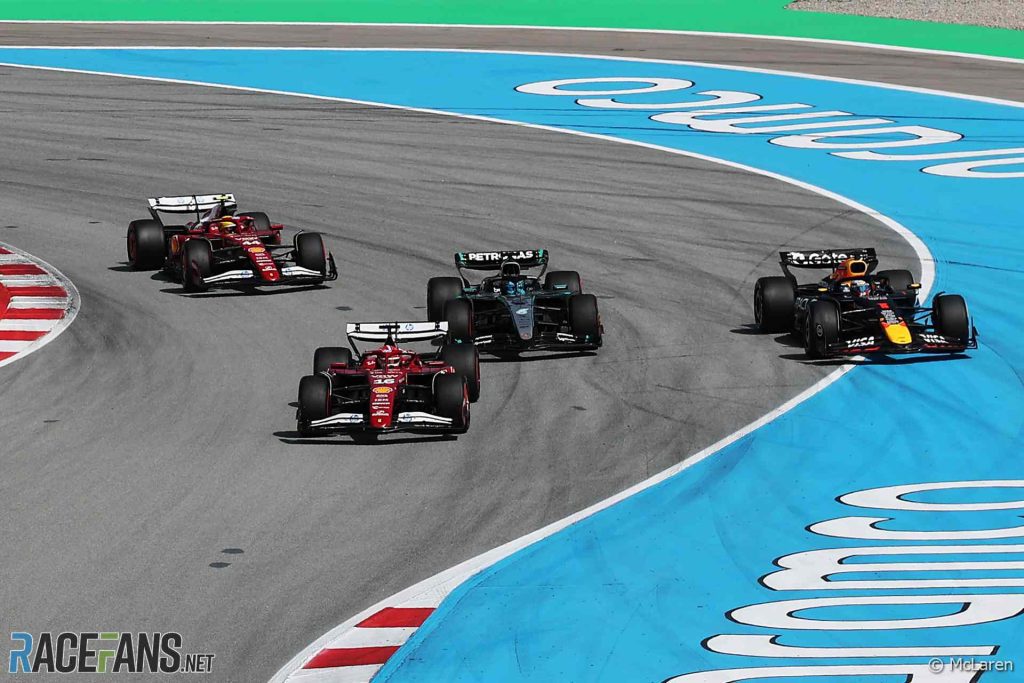Red Bull’s Misstep With Verstappen Leads to Collision
Christian Horner, principal of Red Bull Racing, has detailed the team’s mistake in instructing Max Verstappen to relinquish a position to George Russell in the recent race.
The strategy backfired significantly, as Verstappen collided with Russell after the position change, resulting in a penalty that puts him at risk of an automatic ban. Adding to the team’s frustration, the stewards later stated that Red Bull did not actually need to concede the position.
The incident arose during a restart on lap 61 when Russell attempted to overtake Verstappen at turn one. Verstappen maintained his lead by going wide, remaining ahead of the Mercedes driver.
As the collision occurred, Russell communicated over the radio, “I was up the inside, he just went…” but his race engineer, Marcus Dudley, interjected, saying, “I saw it, I saw.” The conversation ended there without further discussion.
Red Bull advised Verstappen to let Russell pass two laps after the incident. Horner explained that the decision was made due to concerns about possible penalties from the stewards if they did not comply with the situation.
“We have a process,” Horner mentioned to Sky. “Unfortunately, we only have one lap to make that call according to the rules. The evidence showed that axle to axle, George was ahead.”
The stewards determined that Verstappen was right to keep his position as Russell had lost control of his vehicle. Horner pointed out that their error stemmed from focusing solely on the fact that Russell had fully aligned his car alongside Verstappen’s.
After the incident, Verstappen’s emotional response led to the collision, prompting a ten-second penalty that dropped him to 10th place and awarded him three penalty points, leaving him one away from an automatic ban.
“Max has apologized to the team,” Horner stated. “He recognizes the severity of the penalty and knows there are lessons to be learned.” Historically, Verstappen’s emotional reactions have drawn criticism, but Horner defends this trait as essential for the intensity that characterizes his racing prowess.



